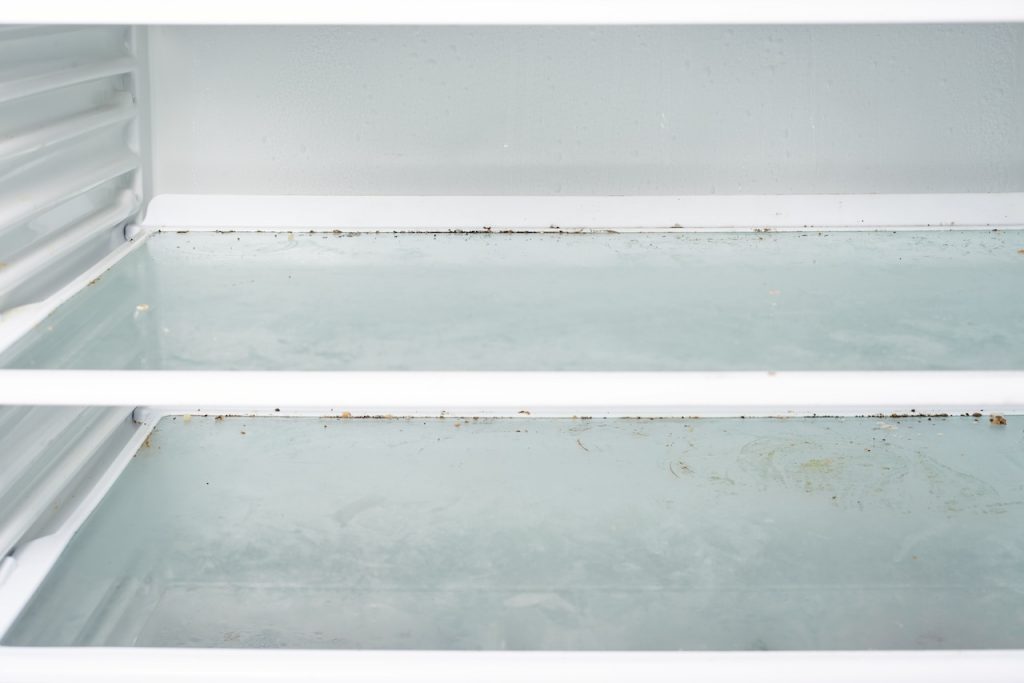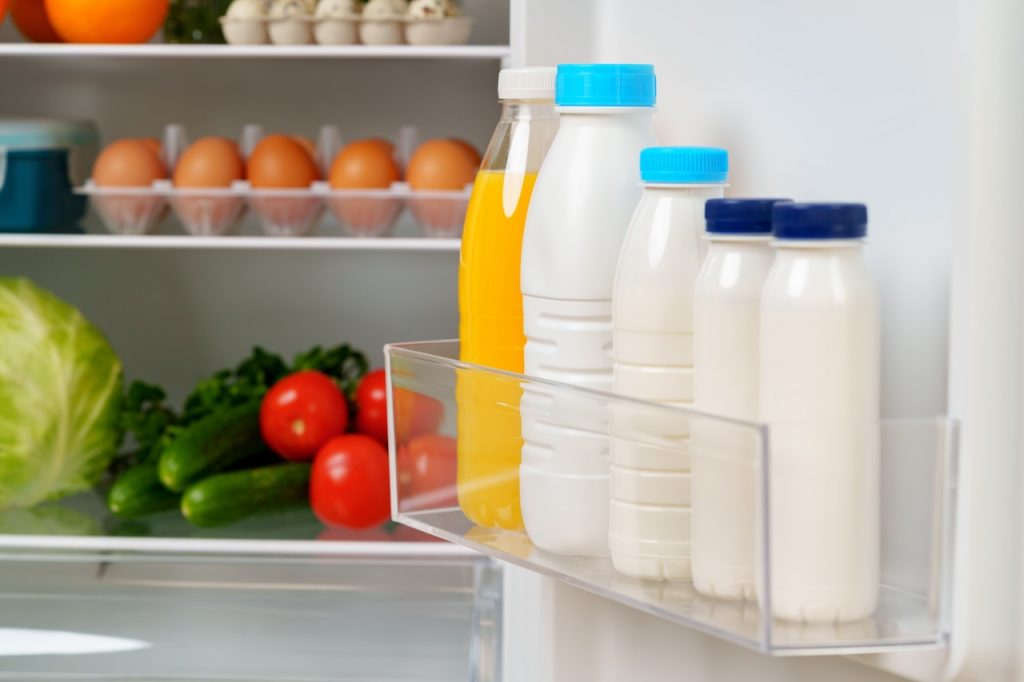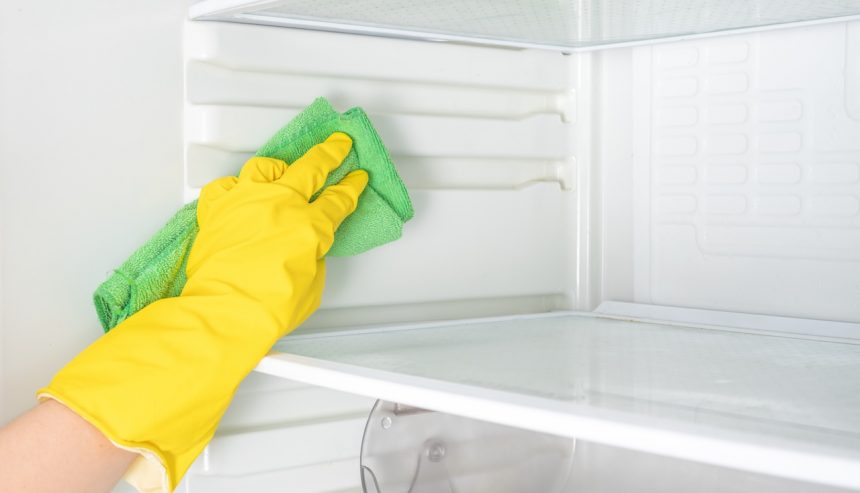When a power outage strikes, your refrigerator can quickly become a breeding ground for bacteria and mold, especially if it’s left without power for an extended period. Knowing how to clean a refrigerator after a power outage is crucial for your health and the efficiency of your appliance. Follow this guide to dispose of spoiled food, clean and sanitize thoroughly, and prevent long-term issues like mold or unpleasant odors.
How to Clean a Refrigerator After a Power Outage
Identifying Spoiled Food After a Power Outage
Before cleaning your refrigerator, it’s essential to identify and dispose of any spoiled food safely. The U.S. Food and Drug Administration (FDA) recommends discarding perishable food, such as meat, dairy, and leftovers if the refrigerator has been above 40°F for more than four hours. Even if food looks or smells normal, it’s better to err on the side of caution. Spoiled food can cause harmful bacteria like E. coli or Salmonella to thrive, posing severe health risks.
To prevent contamination, seal all spoiled food in trash bags. Wear gloves when handling perished items, and wash your hands thoroughly afterward.
This food storage guide from the FDA offers a great place to start your preparation process.
Step-by-Step Guide to Cleaning Your Refrigerator

Remove all items, including shelves and drawers, when cleaning your refrigerator.
- Unplug and Empty the Refrigerator
After removing spoiled food, unplug the refrigerator. Remove all shelves, drawers, and trays to clean them separately. This will make the interior more accessible and thorough. - Wipe Away Surface Mold or Grime
Use a damp cloth to wipe down any mold or dirt inside the refrigerator, making sure to reach corners and crevices where moisture can collect. - Sanitize Using a Solution
Prepare a cleaning solution of warm water and mild dish soap. Mix one tablespoon of baking soda or white vinegar with a quart of warm water for added sanitization. This will help eliminate odors while being gentle on your appliance. Avoid harsh chemicals like bleach, which damage the interior lining and leave harmful residues. - Dry and Replace Parts
After scrubbing the surfaces, rinse the shelves, drawers, and trays with clean water and let them air dry. Dry the inside of the refrigerator with a clean towel to prevent moisture buildup, which can lead to mold growth.
Preventing Mold and Odors After a Power Outage
Even after cleaning, lingering odors or mold spores can be an issue. Here’s how to prevent long-term problems:
- Use Baking Soda or Charcoal
To keep odors at bay, leave an open box of baking soda or activated charcoal in the refrigerator. These natural deodorizers absorb smells without introducing chemicals. - Keep the Fridge Dry
Mold thrives in damp environments. Ensure your refrigerator is dry after cleaning, and regularly wipe up any accumulated spills or condensation. - Ventilation and Air Circulation
Ensure the refrigerator has proper airflow and is set at the correct temperature (below 40°F). Good air circulation will prevent condensation and, in turn, stop mold growth.

Using homemade, gentile cleaners is good for both you and your fridge.
Reorganizing for Optimal Efficiency
After cleaning and sanitizing, it’s time to reorganize your refrigerator. Consider adopting these tips to keep your appliance running efficiently:
- Adjust Shelving for Accessibility
Arrange shelves and drawers so perishable items like dairy and meat are easily accessible and monitored. This can help reduce the chances of food going unnoticed and spoiling. - Use Clear Containers
Store food in clear, airtight containers to keep it fresh and reduce the spread of bacteria. Clear containers also make it easier to keep track of expiration dates and prevent waste. - Rotate Stock
Practice the “first in, first out” method, placing newer items behind older ones. This simple step can prevent food spoilage and ensure you use perishable goods before they go bad.

Clear containers, the FIFO method, and the repositioning of shelves can help mitigate food waste.
Professional Assistance for Post-Outage Mold Issues
If you’ve experienced an extended power outage or suspect mold growth after the event, consulting professionals for a thorough assessment may be wise. PuroClean Emergency Restoration Services specializes in mold remediation services, offering expert help in detecting hidden mold and ensuring your home is safe from harmful contaminants.
Sterling’s Mold Remediation Specialists
Power outages can lead to hidden issues like mold growth in your refrigerator and other home parts. We offer comprehensive mold removal services to keep your home safe and clean. Whether it’s tackling refrigerator mold or a larger problem, our certified technicians have the experience and equipment to eliminate mold effectively. Visit PuroClean Emergency Restoration Services for more information on mold removal, or call (703) 579-8912 to schedule a professional assessment today.




 PuroClean Emergency Restoration Services
PuroClean Emergency Restoration Services